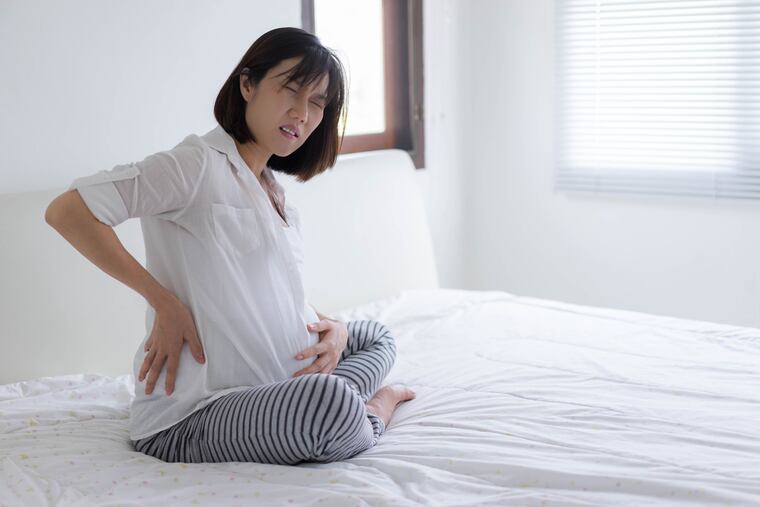Q&A: Can I deal with pregnancy pain without medication?
Pregnancy causes exaggerated curvatures in the spine and sacrum that can contribute to a woman experiencing pain in the neck, back, or pelvis, but medication is not the only recourse.

Q: I’m pregnant, and I don’t want to continue taking pain medicine for my back/head/neck pain. What else can I try?
A: Pregnancy causes extensive physical and physiologic changes that can affect daily functioning. As a woman’s belly continues to grow over the course of pregnancy this can cause a curving forward of the lower part of the spinal column, and/or a curving backward of the upper part of the spine. The latter can cause a restriction of the diaphragm, which can contribute to poor blood circulation from the lower half of the body. This can contribute to swelling that many pregnant women experience in their legs.
A pregnant woman’s sacrum — a shield-shaped, bony structure at the base of the spine above the tailbone – falls more forward as the lower spine curves more backward. The sacrum is connected to the pelvis by two large joints, and with this forward rotation, there is more strain across these joints. This, in addition to the fact that a woman’s pelvis rotates more forward as she progresses through the pregnancy, will create a lot of strain along the pelvic girdle.
Taken together, these exaggerated curvatures can contribute to a woman experiencing pain in the neck, back, or pelvis during the pregnancy.
Osteopathic manipulative treatment (OMT) is a hands-on treatment used to diagnose and treat areas of illness or injury. An osteopathic physician (DO) may use a variety of techniques to move a patient’s muscles and joints, which allows those structures to rebalance. This allows for the body to function more optimally without any areas of strain. These techniques help treat various conditions — including back or neck pain — but also help promote healing in other situations, such as after major surgeries.
OMT is a very useful treatment for pregnant women. Not only can these techniques help with any musculoskeletal pain in the back or neck, but also they can help with any increased bodily fluid congestion that is common in pregnancy. These techniques can help the body’s lymphatic system to improve drainage by eliminating any restrictions at the diaphragm and upper spine to allow for improved return of those bodily fluids and decreased swelling.
Studies have shown that pregnant women who have received OMT to the lower spine had decreased pain during the remainder of the pregnancy compared with those who did not receive OMT. Studies have also shown that women who have received OMT during labor had decreased needs for narcotic pain medications.
Before seeking out an OMT evaluation, or any other additional treatment regimens, consult your ob/gyn.
For a list of OMT practitioners in your area visit: www.doctorsthatdo.org/find-your-do or www.academyofosteopathy.org/find-an-osteopathic-physician.
Meghna Shah, DO, MPH, is an assistant professor in the department of osteopathic manipulative medicine at the Philadelphia College of Osteopathic Medicine.